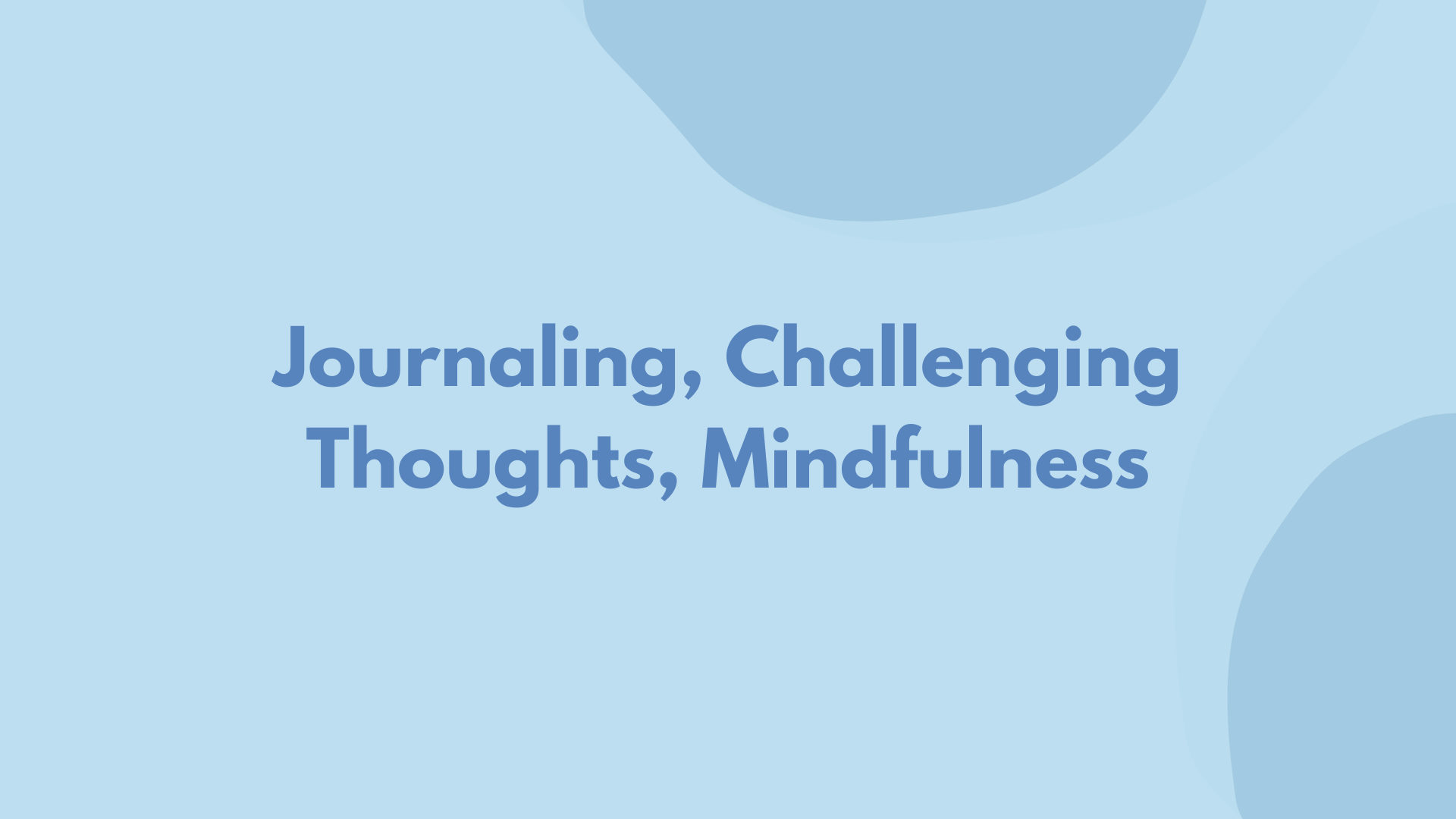
Some strategies that you could utilise to improve your mental health may include journaling, challenging thoughts, and mindfulness.
Journaling
Journaling can be an effective way to reduce stress and anxiety, improve sleep, and increase self-confidence. Journaling does not have to be a long list of things performed throughout the day but can be a short time to yourself to understand how you are feeling and gain a deeper understanding of a situation. By taking the time to understand your thoughts, you can help process difficult emotions, think of alternative solutions to problems and highlight positive parts of the day.
Journal Prompts
- What am I feeling right now and where can I feel it in my body?
- What is one thing I am grateful for today?
- How could I have been kinder to myself today?
- What is one thing that I have learnt about myself today?
- What is one thing that I have learnt from others today?
- When have I managed a stressful situation recently and how did I get through it?
- What is one value that is important to me and how could I move towards this more?
- Reflect on a recent disagreement and how effective your communication was.
- Write about a book, movie, TV show or song that resonated with you emotionally.
- What is one positive change that I can make tomorrow?
Challenging our thoughts
Our thoughts can often be biased or distorted, and we can tend to assume that the thoughts that we are having are facts. In reality, this is often not the case and this assumption can leave us with negative feelings and behaviours.
Challenging our unhelpful thoughts can be an important way of dealing with distress as we understand that these thoughts can often be changed. This is particularly helpful during stressful situations, for anxiety or depression, in relationships, in decision-making and for increasing our self-worth.
There are a range of ways in which we can begin to identify thoughts that may need to be changed, so you can use an approach that feels the best for you. Some of these ways include engaging in mindfulness which involves non-judgemental awareness of thoughts and feelings, when strong emotions arise as these may typically favour emotion over reasoning skills, journaling to note down the thoughts that you are having, seek feedback from a trusted friend, family member or therapist, or the use of thought monitoring apps to track your thoughts and emotions.
The first step to changing an unhelpful thought is to identify the target thought. Next, you can begin questioning the thought with questions such as:
- ‘Is there any evidence to support this thought?’
- ‘Is this thought based on assumptions?’
- ‘Could an alternative view explain this better?’
- ‘What would someone objectively observing the situation say?’
You can then begin reframing the thoughts. This can be done through replacing negative self-talk with self-compassionate or self-encouraging statements, using reasoning to think of alternative thoughts and ultimately, consider a balanced view that considers all the evidence to come up with a rational thought.
It can take practice to identify these unhelpful thoughts, but it can allow you to look at situations from different perspectives. It also allows you to have a more rational outlook at situations which can improve your mental wellbeing.
Mindfulness
Mindfulness is a mental practice that involves maintaining a non-judgemental focus on the present moment. The aim is to observe our thoughts, feelings, bodily sensations and environment, without passing judgement on them, or trying to change or critique them.
Mindfulness can take practice, but with time it can reduce stress, help with emotional regulation, improve focus and concentration, enhance self-awareness and can be used for a number of disorders such as chronic pain, depression, anxiety, post-traumatic stress disorder and sleep disorders.
Three mindfulness exercises that you can try include:
- A Body Scan – mentally scanning your body from head to toe and observing any physical sensations or tension in your body.
- Mindful Eating – practice mindful eating by savouring each bite and focusing on the taste, texture and aroma of the food.
- Mindful Walking – while walking, notice the sensations of your feet hitting the ground, the movement of your body and any changes to your muscles or breath during the walk.

